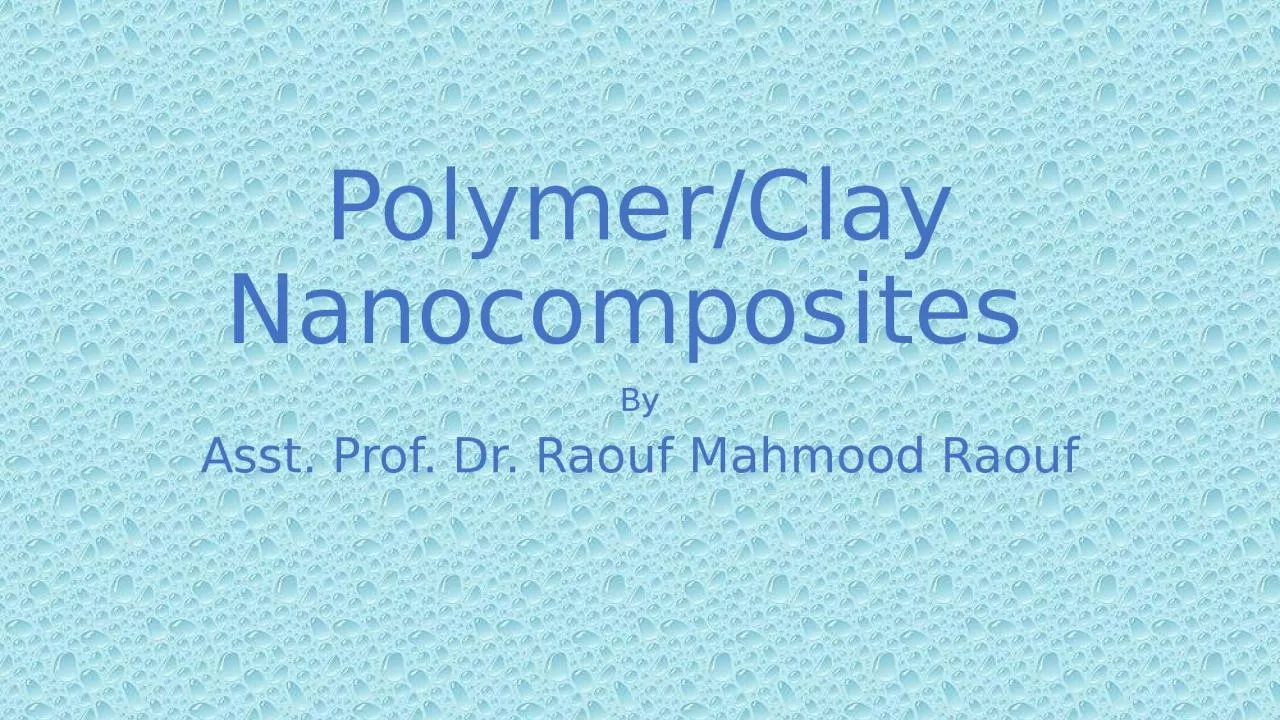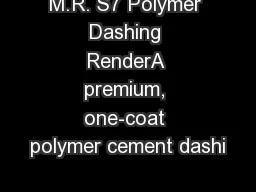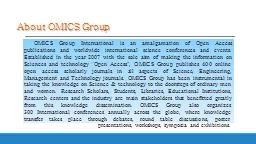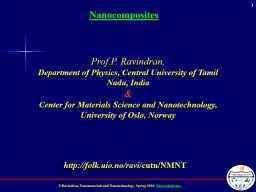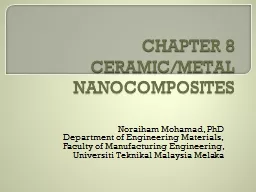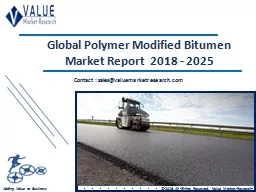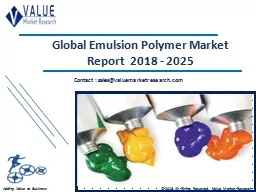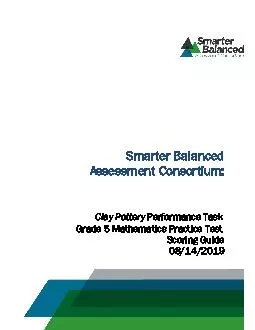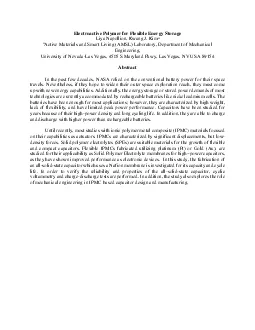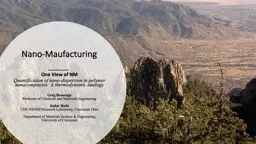PPT-Polymer/Clay Nanocomposites
Author : roxanne | Published Date : 2022-06-14
By Asst Prof Dr Raouf Mahmood Raouf Introduction Clay a natural source with small loadings by weight can substitute reinforces which are being used in polymers
Presentation Embed Code
Download Presentation
Download Presentation The PPT/PDF document "Polymer/Clay Nanocomposites" is the property of its rightful owner. Permission is granted to download and print the materials on this website for personal, non-commercial use only, and to display it on your personal computer provided you do not modify the materials and that you retain all copyright notices contained in the materials. By downloading content from our website, you accept the terms of this agreement.
Polymer/Clay Nanocomposites: Transcript
Download Rules Of Document
"Polymer/Clay Nanocomposites"The content belongs to its owner. You may download and print it for personal use, without modification, and keep all copyright notices. By downloading, you agree to these terms.
Related Documents

